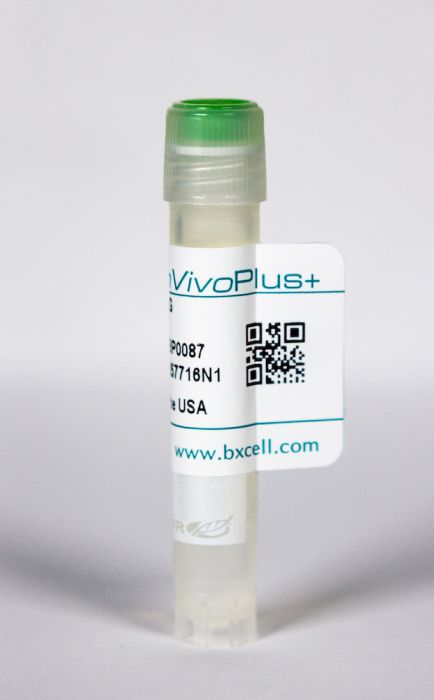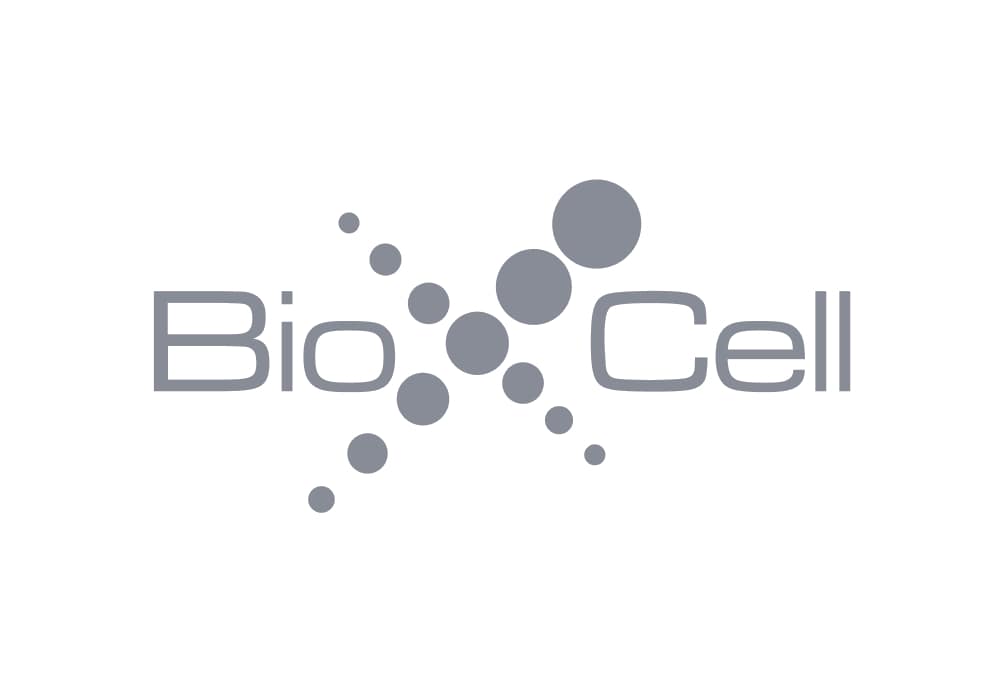InVivoPlus polyclonal Syrian hamster IgG
Product Details
The polyclonal Syrian hamster IgG is purified from Syrian hamster serum. It is ideal for use as a non-reactive control IgG for Syrian hamster antibodies in most in vivo and in vitro applications.Specifications
| Isotype | Syrian hamster IgG |
|---|---|
| Recommended Dilution Buffer | InVivoPure pH 7.0 Dilution Buffer |
| Formulation |
PBS, pH 7.0 Contains no stabilizers or preservatives |
| Sterility | 0.2 µm filtration |
| Purification | Protein G |
| RRID | AB_1107782 |
| Molecular Weight | 150 kDa |
| Storage | The antibody solution should be stored at the stock concentration at 4°C. Do not freeze. |
Additional Formats
Recommended Products
in vivo HER2/neu inhibition
Single-cell profiling guided combinatorial immunotherapy for fast-evolving CDK4/6 inhibitor-resistant HER2-positive breast cancer PubMed
Acquired resistance to targeted cancer therapy is a significant clinical challenge. In parallel with clinical trials combining CDK4/6 inhibitors to treat HER2+ breast cancer, we sought to prospectively model tumor evolution in response to this regimen in vivo and identify a clinically actionable strategy to combat drug resistance. Despite a promising initial response, acquired resistance emerges rapidly to the combination of anti-HER2/neu antibody and CDK4/6 inhibitor Palbociclib. Using high-throughput single-cell profiling over the course of treatments, we reveal a distinct immunosuppressive immature myeloid cell (IMC) population to infiltrate the resistant tumors. Guided by single-cell transcriptome analysis, we demonstrate that combination of IMC-targeting tyrosine kinase inhibitor cabozantinib and immune checkpoint blockade enhances anti-tumor immunity, and overcomes the resistance. Furthermore, sequential combinatorial immunotherapy enables a sustained control of the fast-evolving CDK4/6 inhibitor-resistant tumors. Our study demonstrates a translational framework for treating rapidly evolving tumors through preclinical modeling and single-cell analyses.
The Polycomb Repressor Complex 1 Drives Double-Negative Prostate Cancer Metastasis by Coordinating Stemness and Immune Suppression PubMed
The mechanisms that enable immune evasion at metastatic sites are poorly understood. We show that the Polycomb Repressor Complex 1 (PRC1) drives colonization of the bones and visceral organs in double-negative prostate cancer (DNPC). In vivo genetic screening identifies CCL2 as the top prometastatic gene induced by PRC1. CCL2 governs self-renewal and induces the recruitment of M2-like tumor-associated macrophages and regulatory T cells, thus coordinating metastasis initiation with immune suppression and neoangiogenesis. A catalytic inhibitor of PRC1 cooperates with immune checkpoint therapy to reverse these processes and suppress metastasis in genetically engineered mouse transplantation models of DNPC. These results reveal that PRC1 coordinates stemness with immune evasion and neoangiogenesis and point to the potential clinical utility of targeting PRC1 in DNPC.
Unleashing Type-2 Dendritic Cells to Drive Protective Antitumor CD4(+) T Cell Immunity PubMed
Differentiation of proinflammatory CD4(+) conventional T cells (T(conv)) is critical for productive antitumor responses yet their elicitation remains poorly understood. We comprehensively characterized myeloid cells in tumor draining lymph nodes (tdLN) of mice and identified two subsets of conventional type-2 dendritic cells (cDC2) that traffic from tumor to tdLN and present tumor-derived antigens to CD4(+) T(conv), but then fail to support antitumor CD4(+) T(conv) differentiation. Regulatory T cell (T(reg)) depletion enhanced their capacity to elicit strong CD4(+) T(conv) responses and ensuing antitumor protection. Analogous cDC2 populations were identified in patients, and as in mice, their abundance relative to T(reg) predicts protective ICOS(+) PD-1(lo) CD4(+) T(conv) phenotypes and survival. Further, in melanoma patients with low T(reg) abundance, intratumoral cDC2 density alone correlates with abundant CD4(+) T(conv) and with responsiveness to anti-PD-1 therapy. Together, this highlights a pathway that restrains cDC2 and whose reversal enhances CD4(+) T(conv) abundance and controls tumor growth.
Targeting the orphan nuclear receptor NR2F6 in T cells primes tumors for immune checkpoint therapy PubMed
BACKGROUND: NR2F6 has been proposed as an alternative cancer immune checkpoint in the effector T cell compartment. However, a realistic assessment of the in vivo therapeutic potential of NR2F6 requires acute depletion. METHODS: Employing primary T cells isolated from Cas9-transgenic mice for electroporation of chemically synthesized sgRNA, we established a CRISPR/Cas9-mediated acute knockout protocol of Nr2f6 in primary mouse T cells. RESULTS: Analyzing these Nr2f6(CRISPR/Cas9 knockout) T cells, we reproducibly observed a hyper-reactive effector phenotype upon CD3/CD28 stimulation in vitro, highly reminiscent to Nr2f6(-/-) T cells. Importantly, CRISPR/Cas9-mediated Nr2f6 ablation prior to adoptive cell therapy (ACT) of autologous polyclonal T cells into wild-type tumor-bearing recipient mice in combination with PD-L1 or CTLA-4 tumor immune checkpoint blockade significantly delayed MC38 tumor progression and induced superior survival, thus further validating a T cell-inhibitory function of NR2F6 during tumor progression. CONCLUSIONS: These findings indicate that Nr2f6(CRISPR/Cas9 knockout) T cells are comparable to germline Nr2f6(-/-) T cells, a result providing an independent confirmation of the immune checkpoint function of lymphatic NR2F6. Taken together, CRISPR/Cas9-mediated acute Nr2f6 gene ablation in primary mouse T cells prior to ACT appeared feasible for potentiating established PD-L1 and CTLA-4 blockade therapies, thereby pioneering NR2F6 inhibition as a sensitizing target for augmented tumor regression. Video abstract.
Immune checkpoint modulation enhances HIV-1 antibody induction PubMed
Eliciting protective titers of HIV-1 broadly neutralizing antibodies (bnAbs) is a goal of HIV-1 vaccine development, but current vaccine strategies have yet to induce bnAbs in humans. Many bnAbs isolated from HIV-1-infected individuals are encoded by immunoglobulin gene rearrangments with infrequent naive B cell precursors and with unusual genetic features that may be subject to host regulatory control. Here, we administer antibodies targeting immune cell regulatory receptors CTLA-4, PD-1 or OX40 along with HIV envelope (Env) vaccines to rhesus macaques and bnAb immunoglobulin knock-in (KI) mice expressing diverse precursors of CD4 binding site HIV-1 bnAbs. CTLA-4 blockade augments HIV-1 Env antibody responses in macaques, and in a bnAb-precursor mouse model, CTLA-4 blocking or OX40 agonist antibodies increase germinal center B and T follicular helper cells and plasma neutralizing antibodies. Thus, modulation of CTLA-4 or OX40 immune checkpoints during vaccination can promote germinal center activity and enhance HIV-1 Env antibody responses.


